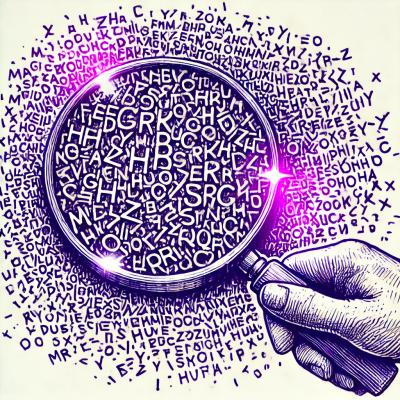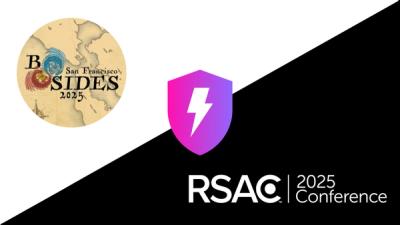
Security News
NVD Concedes Inability to Keep Pace with Surging CVE Disclosures in 2025
Security experts warn that recent classification changes obscure the true scope of the NVD backlog as CVE volume hits all-time highs.
WebGL vertex array object wrapper/polyfill
Try out the demo in your browser
var shell = require("gl-now")()
var createBuffer = require("gl-buffer")
var createVAO = require("gl-vao")
var glslify = require("glslify")
var createShader = require("gl-shader")
var vao, shader
shell.on("gl-init", function() {
var gl = shell.gl
//Create shader object
shader = createShader(gl,
glslify("\
attribute vec2 position;\
attribute vec3 color;\
varying vec3 fragColor;\
void main() {\
gl_Position = vec4(position, 0, 1.0);\
fragColor = color;\
}"
, {inline: true}
),
glslify("\
precision highp float;\
varying vec3 fragColor;\
void main() {\
gl_FragColor = vec4(fragColor, 1.0);\
}"
, {inline: true}
)
);
shader.attributes.position.location = 0
shader.attributes.color.location = 1
//Create vertex array object
vao = createVAO(gl, [
{ "buffer": createBuffer(gl, [-1, 0, 0, -1, 1, 1]),
"type": gl.FLOAT,
"size": 2
},
[0.8, 1, 0.5]
])
})
shell.on("gl-render", function(t) {
var gl = shell.gl
//Bind the shader
shader.bind()
//Bind vertex array object and draw it
vao.bind()
vao.draw(gl.TRIANGLES, 3)
//Unbind vertex array when fini
vao.unbind()
})
Assuming everything worked, here is what it should look like:

Use npm:
npm install gl-vao
To compile demos in for your browser try browserify or beefy.
var createVAO = require("gl-vao")
var vao = createVAO(gl, attributes[, elements][, elementsType])Creates a vertex array object
gl is the gl context in which the vertex array object is created
attributes is an array of objects that give the attributes bound to particular locations starting at 0. Each of these attributes is either an array-like object of length 4 or less representing a constant attribute value, or else it is an object with the following properties that correspond to the parameters passed to gl.vertexAttribPointer
buffer a gl-buffer object encoding a webgl buffersize the size of the attribute (default 4)type the type of the attribute (default gl.FLOAT)normalized a flag that checks whether the attribute should be normalized or notstride the stride of the attribute in bytes (default 0)offset offset to the start of the attribute in the buffer in bytes (default 0)elements is a buffer created using gl-buffer encoding the state of the vertex elements
elementsType the type of data contained within the element buffer, if given. Defaults to gl.UNSIGNED_SHORT. Acceptable values are gl.UNSIGNED_BYTE, gl.UNSIGNED_SHORT. If the OES_element_index_uint extension is available and active, gl.UNSIGNED_INT may also be used.
vao.bind()Binds the vertex array object to the active vertex state.
vao.unbind()Unbinds the vertex array object.
Note You should call this method before switching back to using vertex arrays and buffers as usual. Failing to do so can cause the state of the vertex array object to become corrupted. However, it is acceptable to skip the unbind step if another vertex array object is immediately bound.
vao.draw(mode, count[, offset])Draws the vertex array object.
mode is the mode to use when drawing the buffer, for example gl.TRIANGLES, gl.LINES, etc.count is the number of vertices to draw.offset is the offset to start drawing from. Default 0vao.update(attributes[, elements][, elementsType])Updates the contents of the vertex array object using the same syntax and conventions as the constructor.
vao.dispose()Destroys the vertex array object and releases all of its resources.
(c) 2013 Mikola Lysenko. MIT License
FAQs
Vertex array object wrapper/shim for WebGL
We found that gl-vao demonstrated a not healthy version release cadence and project activity because the last version was released a year ago. It has 11 open source maintainers collaborating on the project.
Did you know?

Socket for GitHub automatically highlights issues in each pull request and monitors the health of all your open source dependencies. Discover the contents of your packages and block harmful activity before you install or update your dependencies.

Security News
Security experts warn that recent classification changes obscure the true scope of the NVD backlog as CVE volume hits all-time highs.

Security Fundamentals
Attackers use obfuscation to hide malware in open source packages. Learn how to spot these techniques across npm, PyPI, Maven, and more.

Security News
Join Socket for exclusive networking events, rooftop gatherings, and one-on-one meetings during BSidesSF and RSA 2025 in San Francisco.